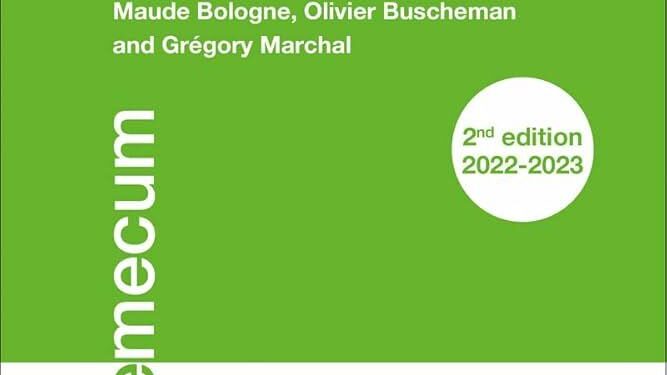Luxembourg tax authorities have issued new guidance clarifying the application of the so-called “CIV carve-out” within the framework of the reverse hybrid rules. This latest interpretation aims to provide much-needed clarity for funds and corporate taxpayers navigating the complex landscape of hybrid mismatch arrangements under Luxembourg tax law. The clarification, highlighted in a recent update by law firm Stibbe, addresses key uncertainties surrounding the classification and tax treatment of Collective Investment Vehicles (CIVs), offering important insights for both domestic and international investors.
Luxembourg Tax Authorities Provide Clarity on CIV Carve Out Implications
The recent guidance from Luxembourg tax authorities offers much-needed clarity on the application of the “CIV carve-out” in the context of reverse hybrid rules. This development addresses longstanding uncertainties surrounding collective investment vehicles (CIVs) and their classification for tax purposes. Crucially, the clarification delineates specific criteria under which CIVs can benefit from exemptions, preventing unintended tax consequences that previously complicated cross-border investment structures.
Key points emphasized by the authorities include:
- Eligibility criteria for CIVs to qualify under the carve-out provisions.
- Clarified treatment of income streams generated within reverse hybrid arrangements.
- Guidance on documentation and reporting requirements to maintain compliance.
| Aspect | Before Guidance | After Clarification |
|---|---|---|
| Reverse Hybrid Classification | Unclear | Defined criteria established |
| CIV Carve-Out Scope | Uncertain applicability | Targeted exemptions confirmed |
| Compliance Obligations | Variable interpretation | Standardized document requirements |
Navigating the Impact of Reverse Hybrid Rules on Investment Vehicles
The recent clarification by Luxembourg tax authorities regarding the “CIV carve-out” under reverse hybrid rules marks a significant development for investment vehicles structured within the jurisdiction. This guidance sheds light on the conditions under which collective investment vehicles (CIVs) are exempt from being classified as reverse hybrids, effectively mitigating the risk of double taxation that has long concerned investors and fund managers alike. The carve-out aims to preserve Luxembourg’s competitive edge by ensuring that qualifying CIVs can continue benefiting from favorable tax treatment without being ensnared by the complex reverse hybrid provisions introduced by the EU Anti-Tax Avoidance Directive (ATAD).
Key aspects emphasized by the authorities include:
- Qualifying Entities: The carve-out specifically applies to certain regulated, transparent collective investment vehicles recognized under Luxembourg law.
- Structural Requirements: To maintain the exemption, these vessels must meet criteria such as investor transparency and compliance with applicable regulatory frameworks.
- Anti-Abuse Measures: Clear safeguards are now in place to prevent misuse of the exemption, including substance requirements and limitations on profit shifting.
| Aspect | Details | Impact |
|---|---|---|
| Scope | Regulated CIVs under Luxembourg Law | Exemption from reverse hybrid classification |
| Transparency | Investor-level transparency mandatory | Prevents double taxation at entity level |
| Anti-Abuse | Substance and economic activity requirements | Limits tax avoidance strategies |
This clarity enables fund managers and tax planners to reassess and potentially restructure their investment vehicles with enhanced confidence. By defining explicit boundaries, Luxembourg bolsters its reputation as a leading hub for transparent and tax-efficient investment structures within Europe.
Expert Recommendations for Compliance and Strategic Planning in Light of New Guidance
In response to the updated guidance on the “CIV carve-out” under Luxembourg’s reverse hybrid rules, experts urge companies to reassess their cross-border structures swiftly. A thorough compliance review is essential, particularly for entities relying on Luxembourg investment vehicles that may fall within the new criteria. Stakeholders should prioritize:
- Mapping existing hybrid arrangements to identify potential exposure to the revised tax framework.
- Consulting with tax advisors to interpret nuanced distinctions in the guidance and anticipate enforcement approaches.
- Updating reporting protocols to ensure transparency with the Luxembourg tax administration and minimize audit risks.
Strategic planning must embrace both short-term compliance and long-term restructuring opportunities. The clarified carve-out offers a window for optimizing entity classification and mitigating adverse tax impacts. The table below summarizes key considerations for Luxembourg entities affected versus those exempt under the new guidance:
| Entity Type | Exposure Under New Rules | Recommended Action |
|---|---|---|
| Lux SICAV/SIF Holding Companies | Low (generally exempt) | Maintain current structure; monitor updates |
| Lux CIVs with Hybrid Features | High (subject to reverse hybrid rules) | Evaluate entity reclassification or restructuring |
| Non-Lux Investment Vehicles | Medium (dependent on jurisdictional interaction) | Review cross-border treaty positions |
In Retrospect
In summary, the recent clarification from Luxembourg tax authorities regarding the “CIV carve-out” under the reverse hybrid rules provides much-needed guidance for taxpayers navigating these complex regulations. By delineating the scope and application of the carve-out, the authorities aim to enhance legal certainty and compliance within Luxembourg’s investment fund sector. Stakeholders can now better assess the implications for their structures, aligning with evolving international tax standards. As these developments continue to unfold, market participants are advised to monitor further updates from Luxembourg’s tax administration to ensure ongoing adherence to the revised rules.
















